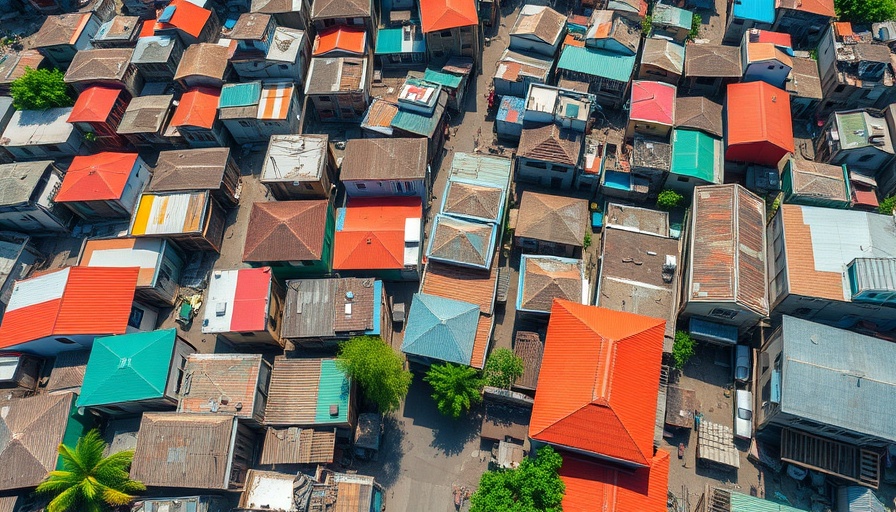
Understanding the Divergence in Asia's Financial Markets
Asia's financial markets are often viewed through the lens of innovation and growth, so it is concerning when experts like Christina Ng, managing director of the Energy Shift Institute, assert that these markets are increasingly pricing for delay in addressing climate change. During a recent discussion at the Bloomberg Sustainable Business Summit in Singapore, Ng articulated a pressing need for better governmental policy clarity, which is currently lacking and hindering effective climate action.
What's Driving the Delay?
Financial markets respond to the signals governments send. When those signals lack clarity, financial institutions and companies may hesitate to make bold moves necessary for environmental sustainability. As Ng pointed out, this results in mixed messages that prevent timely investment in green technologies. This issue is particularly relevant in light of the commitments made under the Paris Agreement, which aims to keep global warming well below 2°C and ideally to 1.5°C.
Japan: An Example of Mixed Signals
Japan has positioned itself as a leader in transition finance, with ambitious targets for issuing Green Transformation (GX) bonds. The country aims to mobilize ¥20 trillion (approximately $140 billion) in efforts to decarbonize its economy by 2050. However, critics argue that despite these commitments, Japan continues to invest in fossil fuels, which sends conflicting signals to investors and companies regarding its climate goals. This inconsistency raises questions about whether financial frameworks are genuinely aligned with scientific evidence that supports aggressive emissions reductions.
Legal Risks and Market Pressure: An Opportunity for Change
As more companies and investors become aware of impending legal risks related to climate change, there is potential for a shift towards more aggressive climate action. Those companies that fail to align with environmental standards could face reputational damage or financial penalties in the near future. This reality could expedite the transition to greener practices, as businesses seek to protect themselves from future risks.
Regions at Risk: A Call for Stronger Policies
While Asia is seen as an engine for economic growth, the divergence within its financial markets indicates that without robust governmental policies, the transition towards renewable energy could be severely hampered. Countries like Japan and others must create clear, actionable guidelines that promote sustainable practices and instill confidence in investors to move away from fossil fuel dependency. Through decisive action, governments can signal to the financial markets that they are committed to climate-friendly policies.
The Role of Eco-conscious Businesses
In light of this financial environment, businesses must adopt eco-friendly practices not only for regulatory compliance but also as part of their core values. Companies can lead the way by implementing sustainability initiatives, investing in renewable energy, and embracing ethical sourcing. These practices align with the growing consumer demand for green products and responsible consumption. Businesses that embrace these values also position themselves as attractive investments amidst a landscape increasingly focused on environmental stewardship.
Future Trends and Predictions
Looking ahead, the trend appears to be predicated upon increased awareness and demand for sustainable solutions. Companies that adapt and innovate in the face of these demands will likely thrive, while those that resist change may find themselves facing not only financial pressures but also social backlash. As the landscape continues to evolve, it is crucial for both businesses and financial markets to embrace sustainability as a core tenet, ultimately leading to a greener future.
Building a Sustainable Framework
The future of Asia’s financial markets rests on establishing a strong, unified approach to climate action that integrates both innovative financing and clear regulatory guidelines. As environmental conservation becomes not just a trend but a necessity, it is imperative that both governments and businesses come together to commit to a sustainable future. Individual actions, from consumers choosing eco-friendly products to corporations embracing renewable energy, play a significant role in shaping a resilient framework for the market.
Encouraging Collective Action
As the impact of climate change becomes more pronounced, the call for urgent action grows louder. Everyone has a role to play, from consumers choosing sustainable living practices to organizations advocating for supportive policies. By integrating sustainability into daily choices and corporate strategy, we can collectively reduce environmental impacts and work toward a more sustainable future. The time for action is now.
 Add Row
Add Row  Add
Add 



Write A Comment